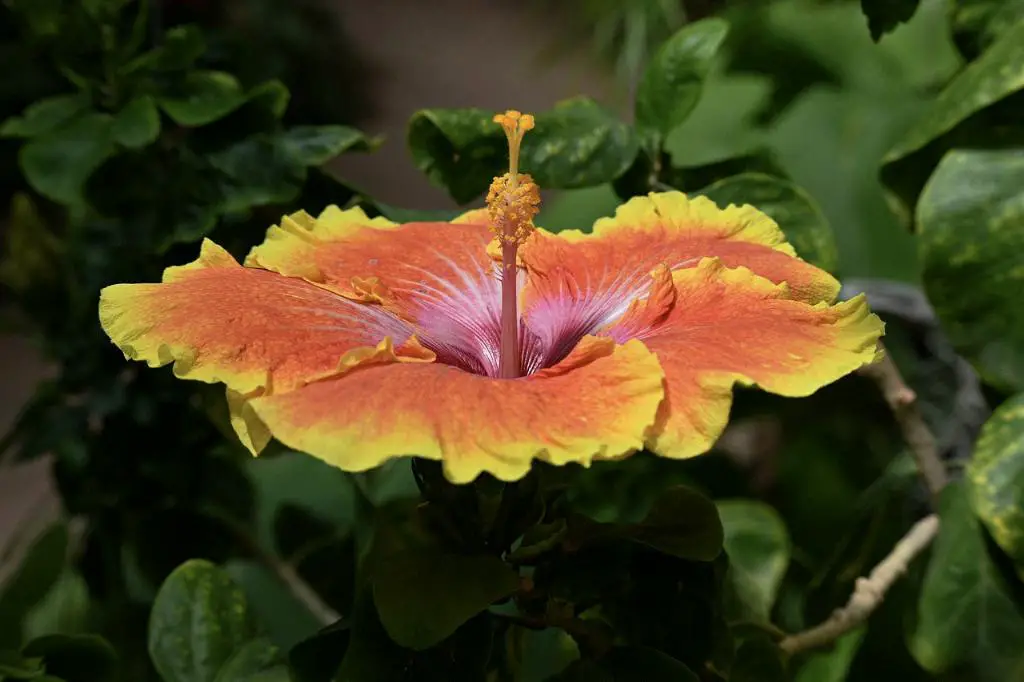When it comes to the topic of whether all hibiscus flowers are edible, there are a few key points to consider. Hibiscus, a beautiful flowering plant that comes in various colors and sizes, has been used in a variety of cultural practices and culinary traditions. In some Hindu rituals, hibiscus holds a special place, showcasing its significance and versatility beyond just being an ornamental plant. Additionally, certain cultures have recognized hibiscus for its potential medicinal properties, adding further depth to its allure.
Early research into the health benefits of hibiscus has yielded some interesting findings. Scientists have documented evidence supporting the idea that hibiscus may offer various health advantages, whether consumed in the form of flowers, leaves, or seeds. This discovery underscores the nutritional potential of hibiscus and its various parts, shifting the conversation beyond its aesthetic appeal.
One fascinating aspect of hibiscus is the edibility of its flowers, leaves, and seeds. While many people are familiar with consuming hibiscus as a tea or herbal infusion, the actual consumption of different parts of the plant opens up a world of culinary possibilities. For those curious about exploring the realm of edible flowers, hibiscus presents a unique and flavorful option to consider.
Now, focusing specifically on hibiscus flowers, it’s worth noting that not all varieties are considered edible. Certain species of hibiscus are cultivated primarily for ornamental purposes and may not be suitable for consumption. Therefore, it’s crucial to exercise caution and ensure that you are selecting the right type of hibiscus flowers for culinary use.
For those interested in incorporating hibiscus flowers into their diet, it is essential to verify the specific species and its suitability for consumption. Edible hibiscus flowers can be a delightful addition to various dishes, providing both visual appeal and a unique floral flavor profile that can elevate culinary creations.
When preparing hibiscus flowers for consumption, it’s essential to follow proper cleaning and cooking methods to ensure food safety. By handling hibiscus flowers with care and attention to hygiene, you can enjoy their vibrant color and distinct taste without compromising on health and well-being.
Some popular ways to incorporate hibiscus flowers into your cooking repertoire include using them in salads, desserts, jams, and syrups. The versatility of hibiscus flowers allows for creative experimentation in the kitchen, giving you the freedom to explore different culinary applications and flavor combinations.
Whether you choose to enjoy hibiscus flowers in sweet or savory dishes, their edible nature opens up a world of gastronomic opportunities. By embracing the diverse culinary potential of hibiscus flowers, you can introduce new flavors and textures to your meals, making dining a truly sensorial experience.
Furthermore, the nutritional profile of hibiscus flowers adds another layer of interest to their edibility. Packed with vitamins, minerals, and antioxidants, hibiscus flowers offer a range of health benefits that can support overall well-being and vitality. Including hibiscus flowers in your diet can be a flavorful way to enhance your nutritional intake and promote a balanced lifestyle.
In conclusion, while not all hibiscus flowers are edible, there are specific varieties that are safe for consumption and can be enjoyed in a multitude of culinary applications. By exploring the edible potential of hibiscus and incorporating its flowers into your cooking endeavors, you can unlock a world of flavors, textures, and health benefits that will enrich your dining experience.

